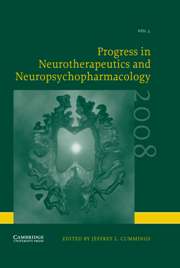No CrossRef data available.
Article contents
Effect of Methylphenidate in Patients with Acute Traumatic Brain Injury; a Randomized Clinical Trial
Published online by Cambridge University Press: 12 December 2007
Extract
ABSTRACT
Background: Traumatic brain injury (TBI) is one of the major causes of death and disability among young people. Methylphenidate is a neural stimulant with possible brain protection properties and has been mainly used in clinic for childhood attention deficit/hyperactivity disorder. TBI patients with late psychosocial problems could benefit from methylphenidate because of the effect on arousal and consciousness level in the sub-acute phase. We studied this effect during the acute phase of moderate and severe TBI. Design and Methods: Forty patients with severe TBI (GCS = 5–8) and 40 moderate TBI patients (GCS = 9–12) were randomly divided into treatment and placebo groups on the day of admission. Treatment group received methylphenidate 0.3 mg/kg two times a day orally, beginning on the second day of admission and continuing until being discharged. Admission information and daily Glasgow Coma Scale (GCS) were recorded. Medical, surgical, and discharge plans for patients were decided by attending physicians, who were kept blinded during the course of treatment. Results: In the severe TBI patients, both hospital and ICU length of stay, on average, were shorter in the treatment group compared with the control group. In the moderate TBI patients, ICU stay was shorter in the treatment group, there was no significant reduction of the period of hospitalization. Interpretation: There were no significant differences between the treatment and control groups in terms of age, sex, post-resuscitation GCS, or brain scan findings, in either severely or moderately impaired TBI patients. Methylphenidate was associated with reductions in ICU and hospital length of stay by 23% in severe TBI patients (p = 0.06 for ICU and p = 0.029 for hospital stay time), in the moderately TBI patients who received methylphenidate, there was 26% fall (p = 0.05) in ICU length of stay.
- Type
- Research Article
- Information
- Progress in Neurotherapeutics and Neuropsychopharmacology , Volume 3 , Issue 1 , January 2008 , pp. 189 - 197
- Copyright
- © 2008 Cambridge University Press


